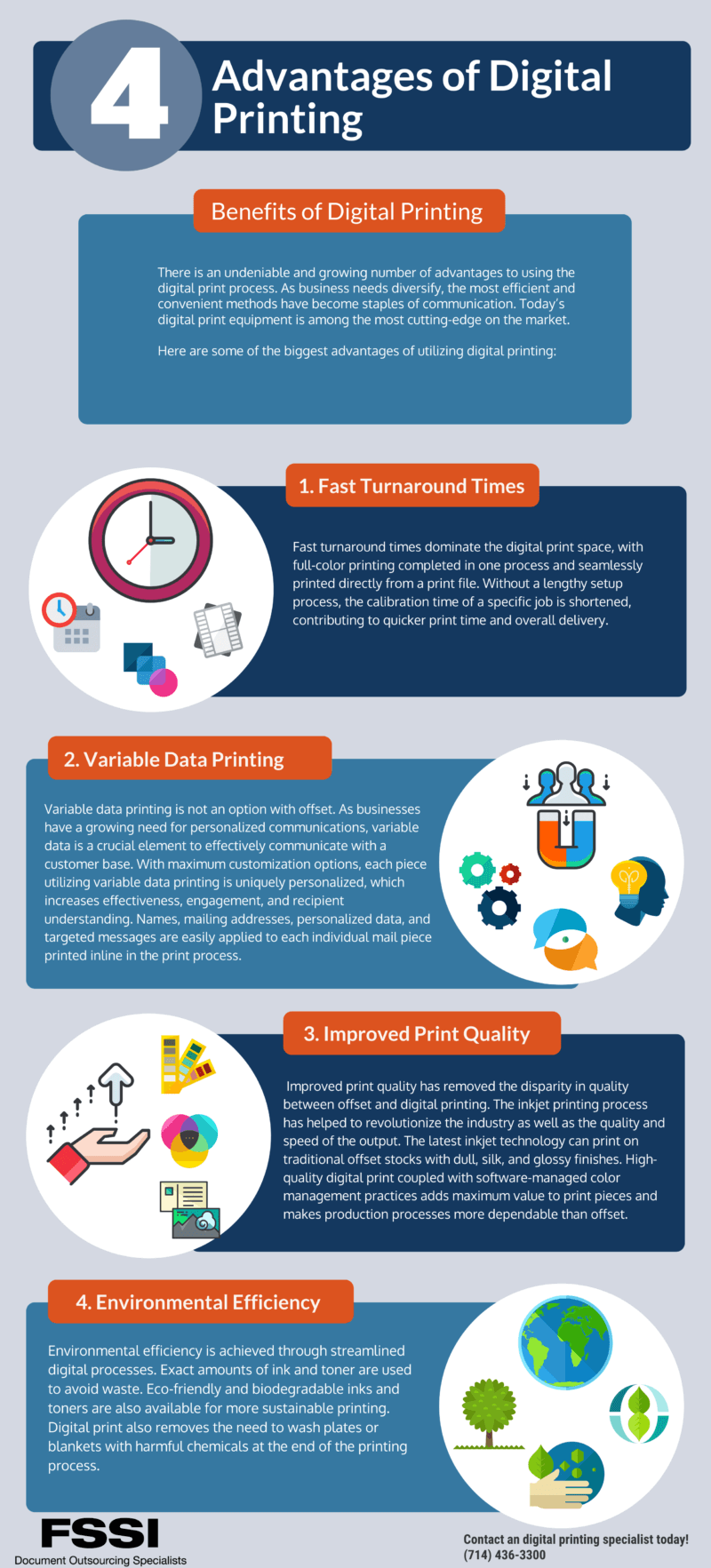The Only Guide to Digital Printing
The Only Guide to Digital Printing
Blog Article
Digital Printing Fundamentals Explained
Table of ContentsDigital Printing for DummiesDigital Printing Fundamentals ExplainedAll about Digital PrintingThe 7-Minute Rule for Digital PrintingAn Unbiased View of Digital PrintingExamine This Report on Digital Printing
Variable information printing, such as direct mail with individualized codes and addresses, is ideally fit for electronic printing. Digital fast printing only needs four actions of layout, review, printing and binding to obtain everything done. Digital fast printing has an unparalleled benefit: print on need.According to PMMI, digital printing allows brands and producers to respond promptly to customer demands while enhancing the supply chain, lowering warehousing expense and waste, and taking pleasure in faster time to market. That all sounds fantastic, but exactly how does this technology do all that? The major differentiator of these technologies is that there are no set-up fees and no plates with digital printing.
Digital Printing for Beginners
According to Wikipedia, the greatest difference in between digital printing and traditional methods such as lithography, flexography, gravure, or letterpress - Digital Printing is that there is no requirement to replace printing plates in electronic printing, whereas in these analog printing approaches the plates are consistently changed. This leads to quicker turn-around time and lowers cost when making use of digital printing.
Digital printing is extremely adaptable, so it's very easy to make changes to the bundle layout rapidly. It all goes back to the plates.
With conventional printing techniques, short-run printing is simply not feasible. Due to the fact that an excellent style can make or damage your product, electronic printing constantly produces top notch, clear and colorful graphics each time.
Digital printing is the procedure of printing digital-based photos directly onto a selection of media substratums. There is no demand for a printing plate, unlike with countered printing. Digital documents such as PDFs or desktop computer publishing documents can be sent directly to the electronic printing machine to publish on paper, picture paper, canvas, textile, synthetics, cardstock and various other substrates.
The Ultimate Guide To Digital Printing
According to PMMI, digital printing enables brand names and makers to respond rapidly to customer demands while enhancing the supply chain, decreasing warehousing price and waste, and appreciating faster time to market. That all sounds fantastic, yet exactly how does this technology do all that? The significant differentiator of these technologies is that there are no set-up costs and no plates with electronic printing.
According to Wikipedia, the best distinction between electronic printing and standard techniques such as lithography, flexography, gravure, or description letterpress is that there is no requirement to replace printing plates in electronic printing, whereas in these analog printing techniques the plates are repeatedly changed. This results in quicker turnaround time and decreases cost when using electronic printing.

The Of Digital Printing
With conventional printing techniques, short-run printing is just not possible. Since an excellent website link style can make or damage your item, electronic printing constantly develops high-quality, clear and colorful graphics each time.

According to PMMI, digital printing allows brand names and manufacturers to respond promptly to client demands while enhancing the supply chain, decreasing warehousing cost and waste, and enjoying faster time to market. That all audios great, yet exactly how does this modern technology do all that? The major differentiator of these innovations is that there are no set-up costs and no plates with digital printing.
About Digital Printing
According to Wikipedia, the biggest distinction in between digital printing and standard methods such as lithography, flexography, gravure, or letterpress is that there is no need to change printing plates in blog here electronic printing, whereas in these analog printing techniques home plates are continuously changed. This causes quicker turnaround time and decreases price when making use of electronic printing.
Digital printing is extremely flexible, so it's easy to make adjustments to the bundle layout rapidly. It all goes back to the plates.

Everything about Digital Printing
Digital printing is the process of printing digital-based photos directly onto a variety of media substratums. There is no need for a printing plate, unlike with balanced out printing. Digital files such as PDFs or desktop computer publishing files can be sent straight to the electronic printing press to publish theoretically, picture paper, canvas, textile, synthetics, cardstock and other substrates.
Report this page